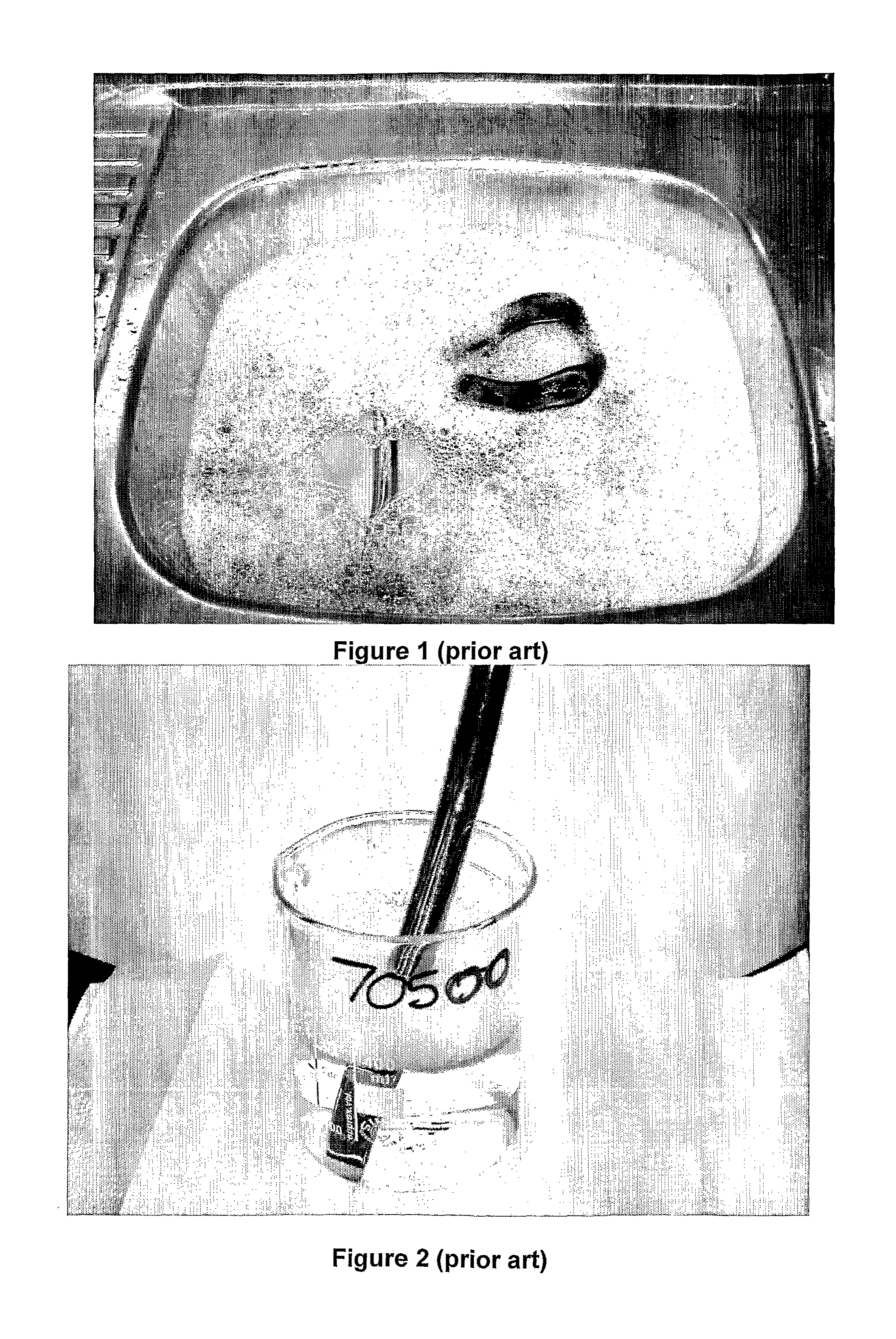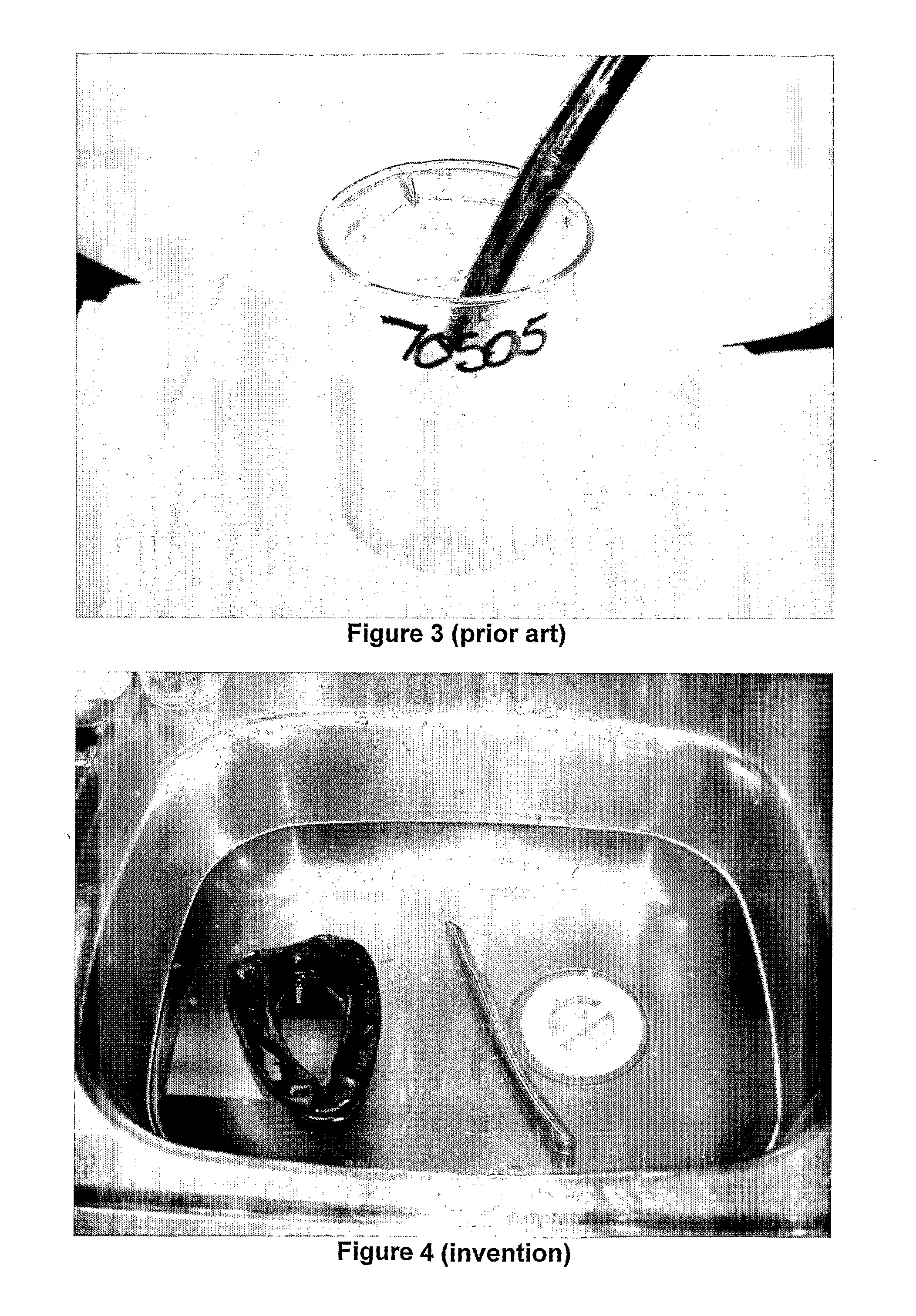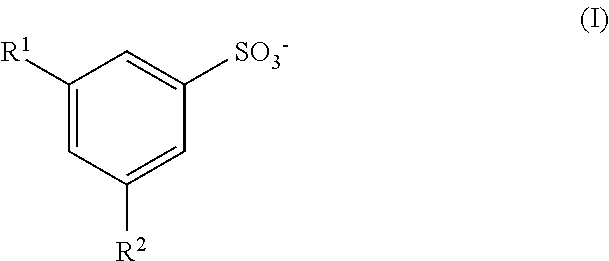Low foaming cleaner
a cleaner and low foaming technology, applied in the field of low foaming cleaners, can solve the problems of compromising the efficacy of the second, affecting the cleaning effect, and affecting the cleaning effect, and achieves the effects of low foaming, excellent enzyme shelf stability, and effective soil removal and protein digestion
- Summary
- Abstract
- Description
- Claims
- Application Information
AI Technical Summary
Benefits of technology
Problems solved by technology
Method used
Image
Examples
example 1
Molar Ratio Hydrotrope to Glycol Ether 1.1:1
[0044]
ComponentPreferred % w / wSodium xylene sulfonate13.8proteolytic enzyme0.06Selected other enzymes0.02glycerol4.1Propylene glycol12glycol ether8.9Preservative0.1Borax4.15% Calcium solution0.5waterbalance
example 2
Molar Ratio Hydrotrope to Glycol Ether 1.2:1
[0045]
ComponentPreferred % w / wSodium xylene sulfonate16protease0.09Selected other enzymes0.01glycerol5Propylene glycol4glycol ether9.5Preservative0.1Borax25% Calcium solution0.5waterbalance
example 3
Molar Ratio Hydrotrope to Glycol Ether 1.6:1
[0046]
ComponentPreferred % w / wSodium xylene sulfonate15protease0.05Selected other enzymes0.02glycerol6Propylene glycol5glycol ether6.6Preservative0.1Borax35% Calcium solution0.1
[0047]Comparative examples 4, 5 are similar to example 1 except that the mole ratio of hydrotrope to glycol ether is 1.0:1.0 in example 4; and is 0.9:1 in example 5.
PUM
| Property | Measurement | Unit |
|---|---|---|
| volume | aaaaa | aaaaa |
| temperature | aaaaa | aaaaa |
| water soluble | aaaaa | aaaaa |
Abstract
Description
Claims
Application Information
 Login to View More
Login to View More - R&D
- Intellectual Property
- Life Sciences
- Materials
- Tech Scout
- Unparalleled Data Quality
- Higher Quality Content
- 60% Fewer Hallucinations
Browse by: Latest US Patents, China's latest patents, Technical Efficacy Thesaurus, Application Domain, Technology Topic, Popular Technical Reports.
© 2025 PatSnap. All rights reserved.Legal|Privacy policy|Modern Slavery Act Transparency Statement|Sitemap|About US| Contact US: help@patsnap.com



